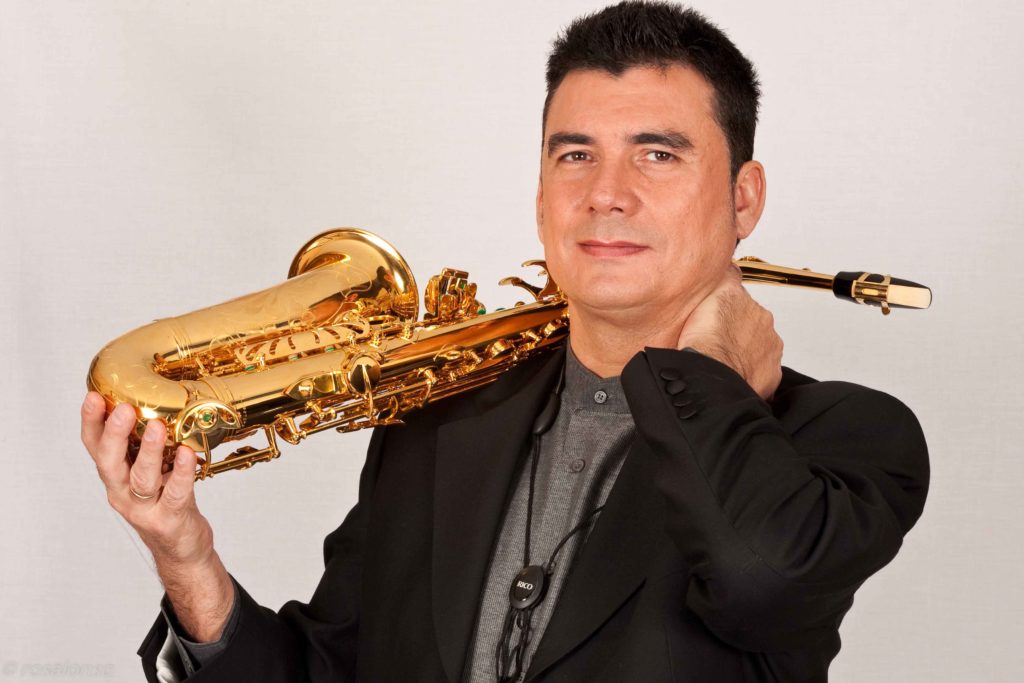One of the pieces of music and video, that I have the most performed in concerts is Metapoiesis and although it is still very modern the work is already 10 years old.
In this recording you will see the original version recorded on CD together with the video
This piece represents very well the transformation of sound with computer media (MaxMsp) to the point that direct from recorded is not distinguished.
To better understand these resources we must listen to the same composer and published on the same CD (Eneko Vadillo: Fusions) the piece Racines. All that is heard is a tenor saxophone transformed with the same computer means.
Here you can listen to Racines.
There is very little repertoire of this type for our instrument and it offers immense sonic possibilities both timbral and polyphonic. This is one of the specialties that we work on in the Master of New Technologies in Current Music at the Royal Conservatory of Madrid
The composer himself explains the origin of Metapoiesis:

At moment of recording the CD Fusions
The work, Metapoiesis, was composed in 2010 and finished in New York. It was ordered by Francisco Martínez with the funding of the Ministry of Culture and INAEM. The work uses a pre-recorded material of tubsax and bass saxophone that was produced in the IRCAM in 2009.The title of the piece is allegorical to both metapoetry and the inspiration of the piece’s sound. Metapoetry is a poetic work in which the topic of the poetry is the poetry itself. Metapoiesis was inspired bt the poem Códigos egocéntricos invertidos (Invested Egocentric Codes) of José Enrique Méndez Díaz.
Meta (beyond) and poiesis (poetry) means the recreation and the joy of the sound itself, the expression of the primordial sound and its transformations without thematic treatments. The inert sound material and the contemporary instrumental resources of the saxophone come to life using a process carefully studied and calculated. These resources could be multiphonics, eolic sounds, transitions and gradations of different sound’s qualities, etc.
The primeval elements such as the air, the eolic sounds, and the slaps create a constructive sense through progressive transformations. This leads us to a section where another kind of poetic sound with athematic resources appears like multiphonics and complex harmonics. The work finishes with a synthesis of all the exposed elements that create an arch structure. However, this structure is asymmetric and irregular, hyperbolic.
The diffusion and spatalization in quadrophonia (or octophonia) in live concert is realized with a patch created using MAX/MSP. This is also responsible for extracting the residual sound elements to a spectrum level in a first section and for creating and performing a live resynthesis thereof.
